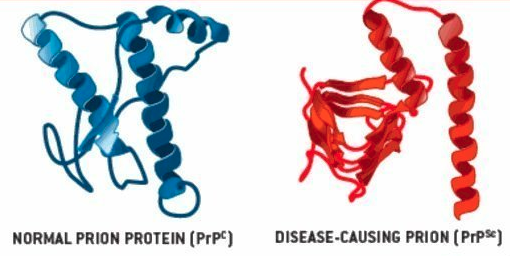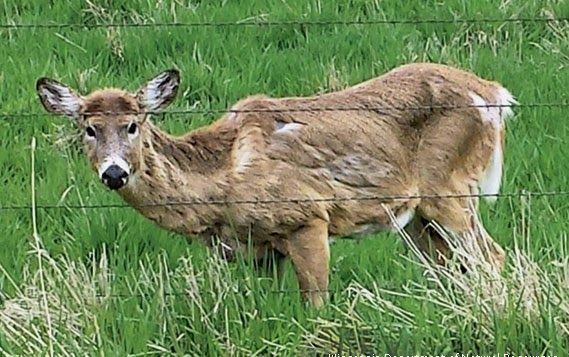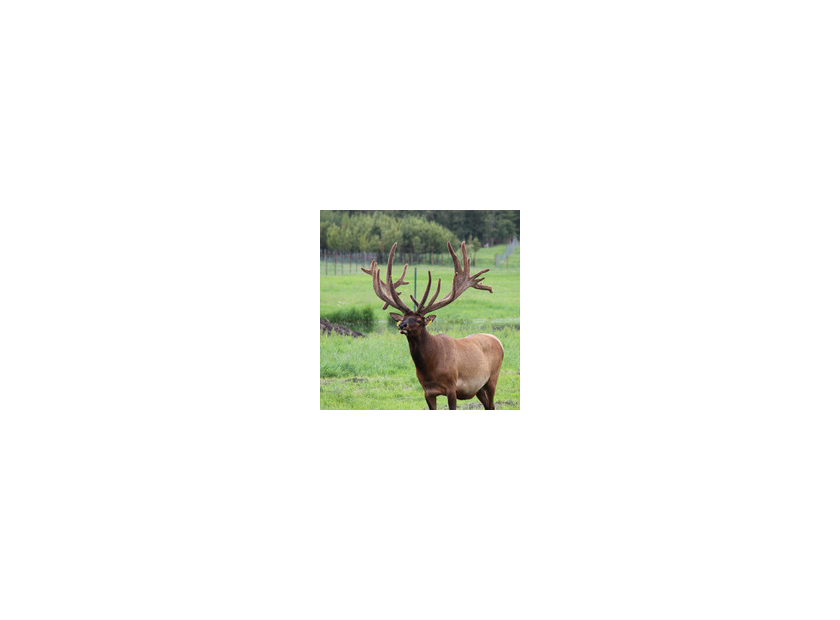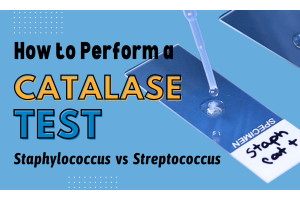Chronic Wasting Disease in Cervids
Chronic Wasting
Disease (CWD), is a fatal prion infection affecting free-ranging and captive
cervid herds. Cervids are hooved ruminant mammals that include deer, caribou,
elk, and moose.

In North America, CWD
has been found in at least 24 states, as well as in Canada, and has devastating
effects on herd populations. Wyoming and Wisconsin have the highest
concentration of infected herds, with numbers approaching 50% in some areas.

First identified as a
clinical disease in captive mule deer in 1967, CWD is caused by an infectious
agent called a prion. Not all prions are deadly. However, resistant prions are
proteins found in the brain and nervous tissue that, for whatever reason, go
rogue. Protein function is entirely dependent upon how they fold, and
these rogue proteins fold abnormally.
Ordinarily,
mis-folded proteins would be recognized and destroyed by the cell.
Instead, these prions resist destruction (i.e. degradation) and, worse,
resistant prions can cause healthy proteins to also become mis-folded over
time. This recruitment of healthy proteins into prions occurs over many years,
leaving tiny holes in brain tissue that can lead to neurodegenerative disease
and ultimately death.
Symptoms of CWD
include excessive salivation, loss of appetite, progressive weight loss,
excessive thirst and urination, listlessness, teeth grinding, lowering of the
head, and drooping ears. It is always fatal. Unfortunately, many of these
signs can also appear as symptoms of other diseases, making it difficult to
distinguish CWD in the field.

There is no cure for
CWD and no reliable live animal test to detect its presence in order to
stop it before it spreads; testing is normally performed on deceased specimens.
Presently, the only effective measure to reduce the spread of CWD is complete
depopulation of herds that test positive for the disease. Since resistant
prions appear to be somewhat host-specific, it is unknown whether prions found
in cervid populations can spread to non-cervid wildlife, other types of
livestock, or even humans.
CWD
is classified as a TSE (transmissible spongiform encephalopathy), like Scrapie
in sheep and goats, Mad Cow disease in cattle, and Creutzfedlt-Jakob disease in
humans. One theory suggests that the misfolded prions are triggered by a
difficult to culture bacterium that has no cell wall known as Spiroplasma.
One researcher found this bacteria in 100% of deer showing symptoms of
CWD.
Due
to the many unknown characteristics of this disease, public health and
wildlife officials caution those who hunt or consume cervid meat to take proper
precautions. Precautions include:
- Do not handle or consume
any animal acting abnormally or that appears sick. If an animal is found
under such conditions, it is recommended to contact state game and fish
department personnel if a sick animal is harvested or observed. - Wear latex or rubber
gloves when field dressing game. - Bone out meat and avoid
cutting through brain or spinal tissue; minimize the handling of brain and
spinal tissue. - Wash hands and
instruments thoroughly in hot soapy water. - Avoid consuming brain,
spinal cord, eyes, spleen, tonsils and lymph nodes. Cut away fatty tissue
to remove remaining lymph nodes. - Avoid consuming meat
from any animal that tests positive for CWD. - If game is commercially
processed, request animals be processed individually, without meat
combined from other animals.
Even with these precautions, prions are not easily destroyed,
and it is uncertain how long they may lay dormant in the environment. It's
believed soil, water, and plants act as natural reservoirs to accumulate prions
deposited from excreta and decaying carcasses. Mounting evidence also suggests
that prions can mutate. Therefore, like many biological agents, prions may
evolve and become better adapted at jumping hosts. Because of the potential for
long-term dormancy and host-to-host transmission, the United States Department of Agriculture's Animal and
Plant Health Inspection Service (USDA APHIS) provides assistance to
states through its voluntary Herd Certification Program (HCP) to help minimize
the risk of introduction, transmission, and spread.
By Kerry Davies Pierce
Design & Development Microbiologist
HARDY DIAGNOSTICS







